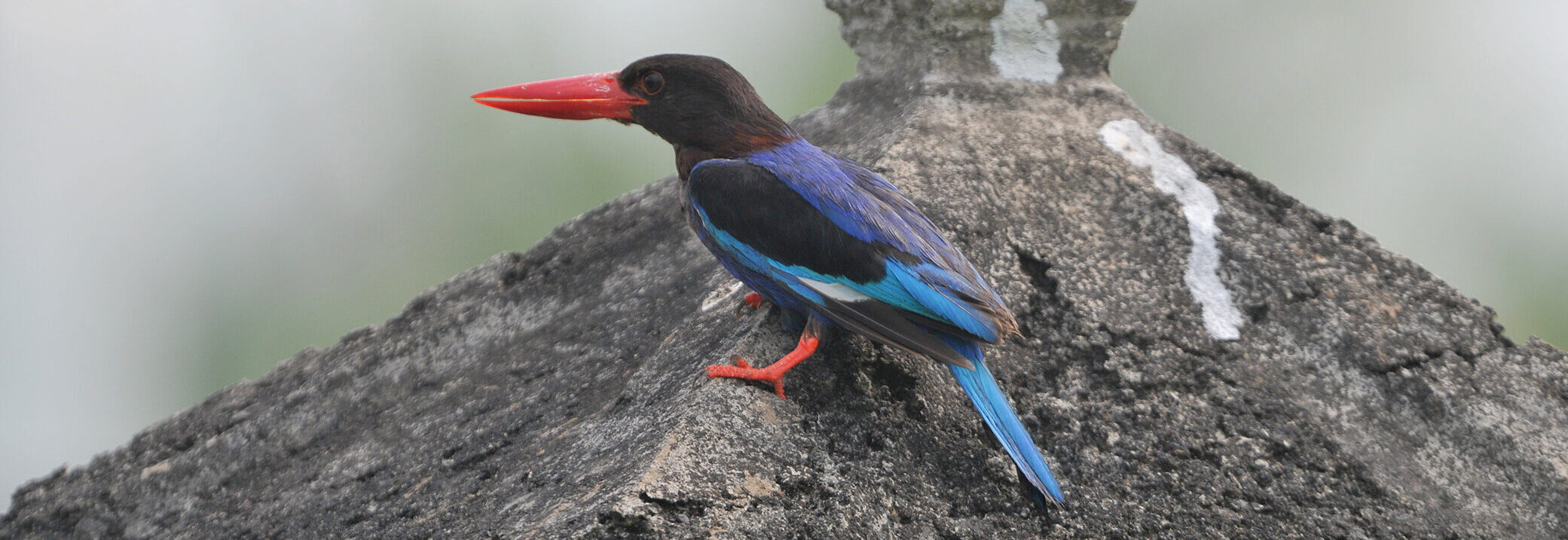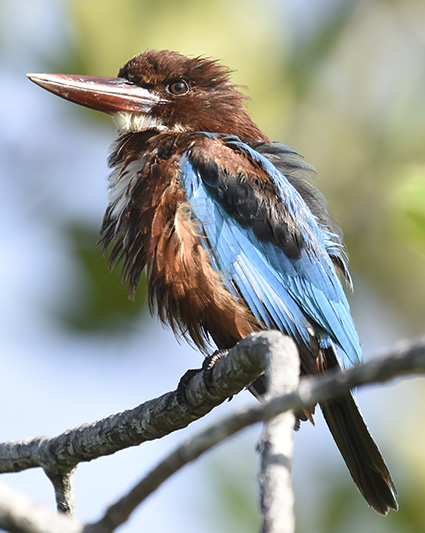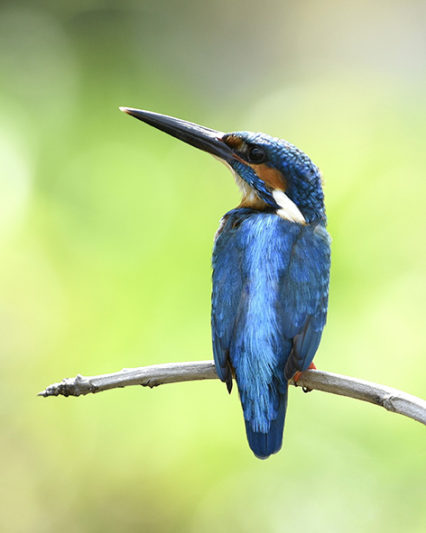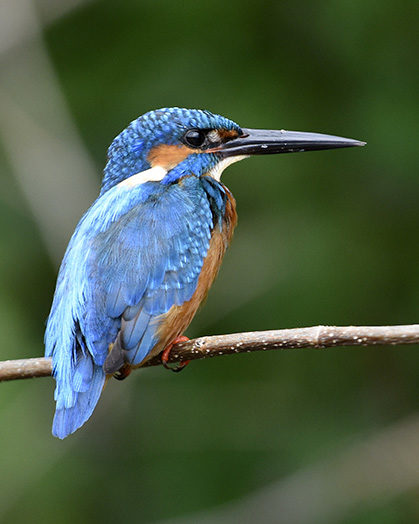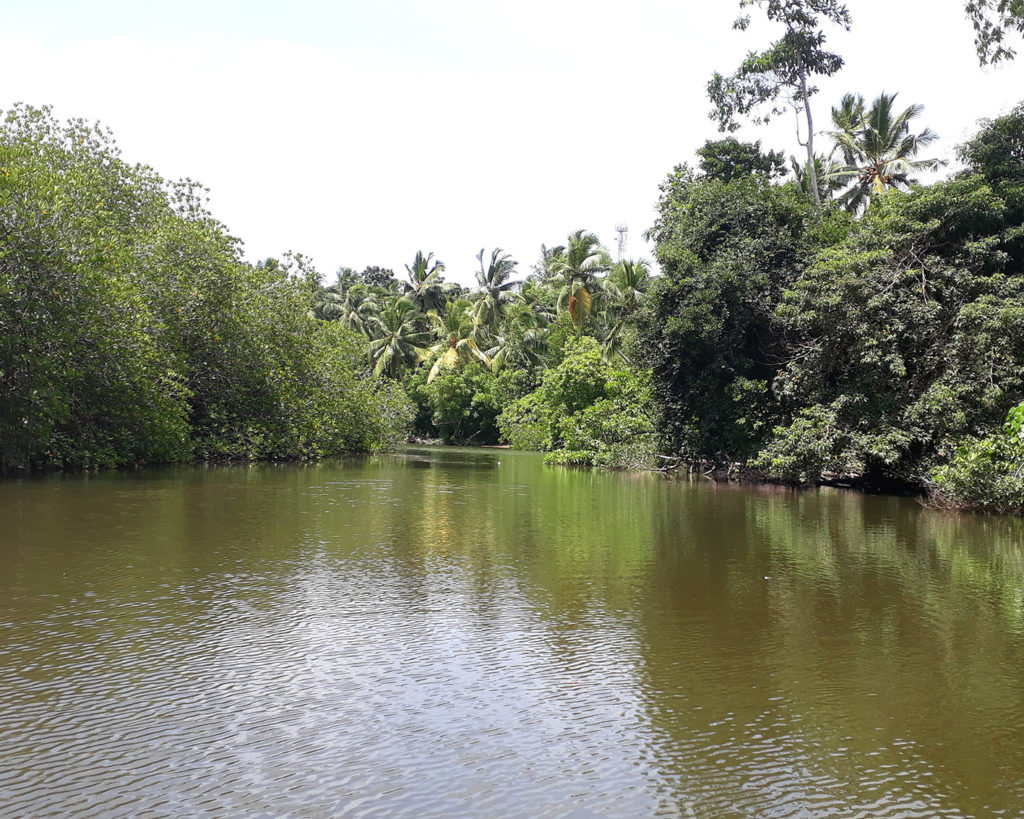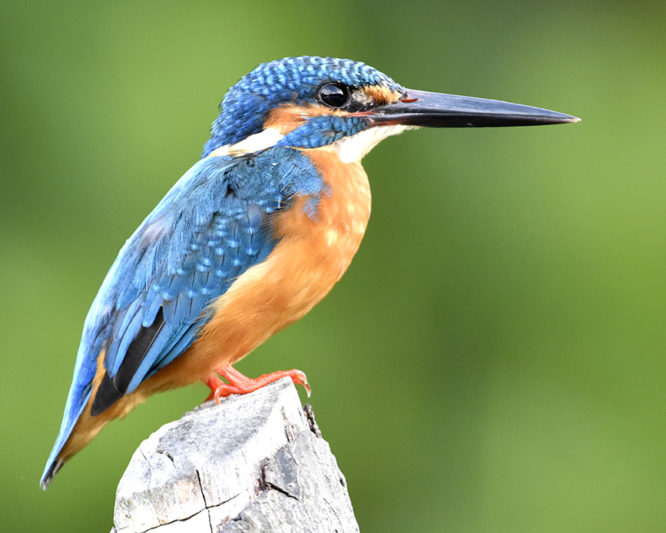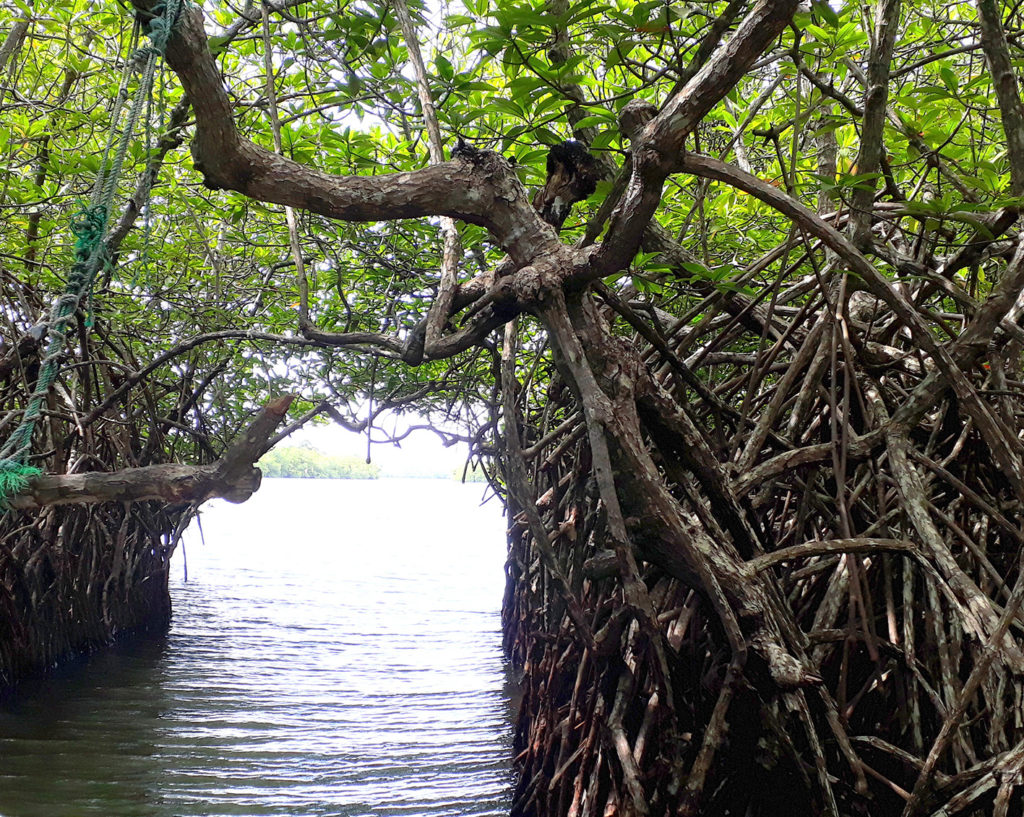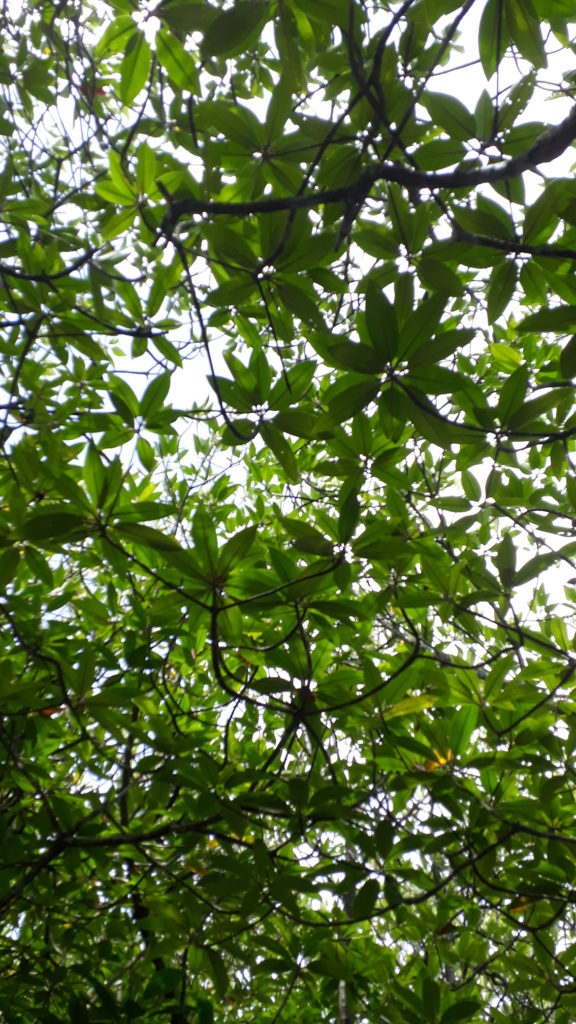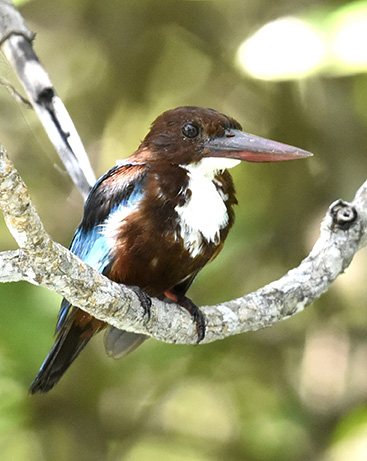In het zuid westen van Sri-Lanka loopt de Madu ganga (rivier). Z’n oorsprong is in het Galle-district en hij loopt wijder uit in het Madu ganga meer bij Balapitiya. Aan het einde loopt de rivier uit in de Indische oceaan. De met prachtige mangrovestruiken begroeide rivier is een thuis voor veel vogels en reptielen. Maar ook zijn er veel bedrijfjes die boottrips verzorgen naar de kaneel eilandjes of naar visfarms voor voetmassage. Daardoor is het overdag een drukke toeristische bedoening. Maar als je er vroeg bij bent kan je in alle rust de vogels waarnemen. Naast veel soorten reigers en roofvogels vallen de Smyrna-ijsvogel en de IJsvogel zoals wij die in Nederland kennen het meest op.
De Smyrna-IJsvogel in Sri Lanka is de Halcyon smyrnensis fusca en komt ook voor in west-India. Hij is ongeveer 28 cm groot. Fel blauwe rug, vleugels en staart. En de kop, flanken en buik kastanje bruin. Keel en borst wit. De opvallende snavel en poten zijn rood. Deze soort leeft van vis, kikkers, slangen, knaagdieren en insecten. Typerend voor de ijsvogels maken ze een nesttunnel in aarde wallen of in mierenhopen. Ze leggen 2 tot 4 eieren per keer.
De “gewone” IJsvogel is een typische viseter en daardoor vaak bij het water te zien op z’n strategisch uitgezochte visplekken. De ondersoort hier is de Alcedo atthis taprobana en komt ook voor in Zuid-India. Met z’n 16 cm toch een opvallende vogel door de iriserende blauwgroene kleur, kobalt streep op de rug en z’n dolkvormige snavel. Een weetje: mannetjes zijn te onderscheiden door hun geheel zwarte snavel. Bij de vrouwtjes is de onder snavel vaal rood.
MADU GANGA, KINGFISHER
In the South west of Sri Lanka runs the river Madu ganga. Its origin starts in the Galle district and will grow bigger to the Madu river lake near Balapitiya. At the end the river will run in the Indian ocean. The river has beautiful mangrove trees and therefore is a home for lots of reptiles and birds. There are also lots of companies organising boat trips to cinnamon islands or fish farms. So during the day it’s very busy with tourists. But, if you’re up early you can spot birds in all tranquillity. Compare to lots of species of herons and birds of prey, the white throated kingfisher and the common kingfisher will stand out the most.
The White throated kingfisher in Sri Lanka is the Halcyon smyrnensis fusca and also lives in West India. He is about 11 inches, or 28 cm tall. Bright blue back, wings and tail. It’s head, sides and belly are chestnut brown. Throat and breast are white. The striking beak and legs are red. This species eats fish, frogs, snakes, rodents and insects.’ The common kingfisher typically makes its nest in ramparts of clay or anthills. They lay about 2 to 4 eggs each time.
The common kingfisher eats lots of fish and therefore is often seen near the water, on his carefully selected fishing posts. The subspecies in this area is the Alcedo atthis taprobana and also lives in South India. This bird is about 6 inches or 16 cm tall, and very outstanding with iridescent blue-green colours. Cobalt stripe on his back and his dagger shaped beak. Males have a completely black beak, with females the bottom of the beak is red.
